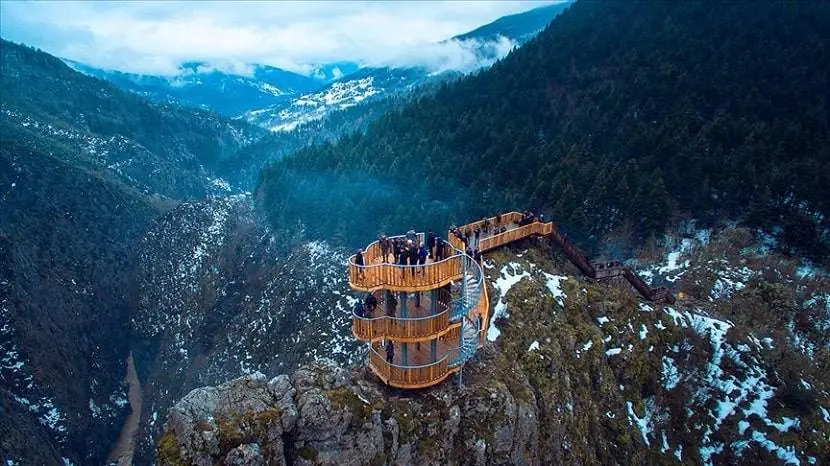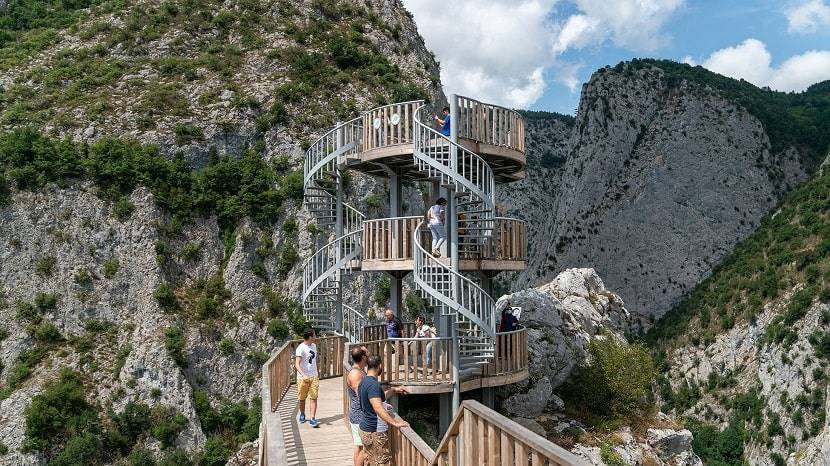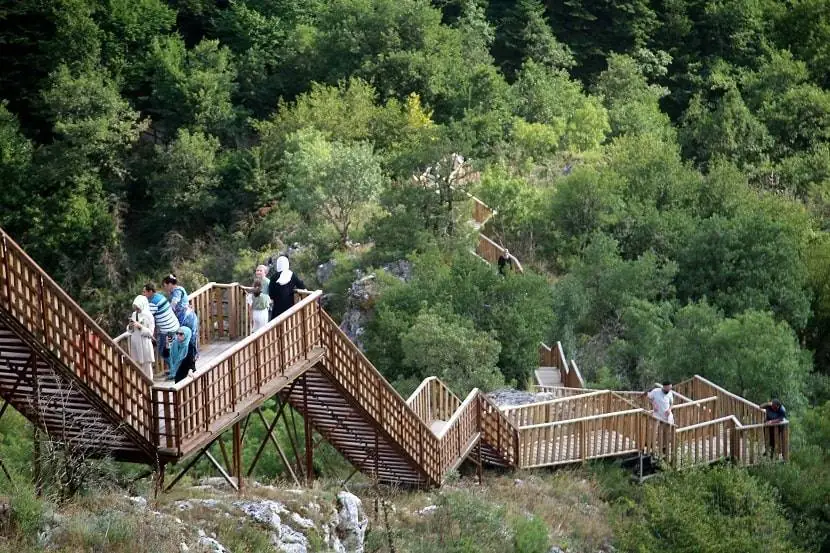Turkey, which is well-known for its incredible natural treasures, is home to hundreds of breathtaking canyons that draw in millions of domestic and international visitors each year. The Valla Canyon, home to the well-known Muratbaş observation terrace, is regarded as “the second deepest canyon in the world,” with certain sections reaching a depth of 1,200 metres (3,937 ft). The canyon is among the most challenging to traverse, but thanks to its observation terraces, it gives visitors the chance to take in the natural beauty.

But there is one thing you should be aware of. There is no way out of the canyon once you enter it. Literally. The entrance of Valla Canyon is in the village of Muratbaş, and its length is roughly 12 kilometres (7.46 miles). There is just one way out of the canyon, therefore if you enter, you will need to trek 12 kilometres till you reach the Hamitli settlement of the Loç Valley in the Cide area.
With the help of a 3-kilometer-long wooden platform that was nailed to the rocks, the Horma Canyon, which was created by the Zar Stream millennia ago, was finally made accessible to travellers. You may take in the canyon’s beauty as you stroll through the wooden platform.
♦ 4 Days Trabzon Tour From Istanbul

Valla was constructed on a cliff swing at a height of 600 metres in the Pnarbaş district of Kastamonu and is thought to be the second-deepest canyon in the world. The swing, a first for Turkey, is anticipated to pique adventurers’ attention.
The second-deepest canyon in the world, Valla Canyon, which is situated in the Küre Mountains National Park on the outskirts of Kastamonu, has a “cliff swing” erected at its summit. The foot swing of the board’s cliff swing has a foot spacing of 20 metres and a height of 14 metres without requiring even a single tree to be felled on Kerte Hill.

For the first time in Turkey, a massive swing measuring 600 metres in height was built on top of a canyon mountain. The Ministry of Agriculture and Forestry’s General Directorate of Nature Conservation and National Parks 10, which receives funding from and assistance from the Northern Anatolia Development Agency (KUZKA), is able to operate. The Regional Directorate began installing the swing on the cliff’s edge in September, but it has already been finished.

